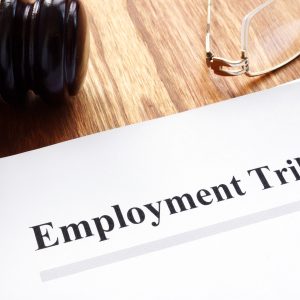The Coronavirus Act 2020 Functions of Her Majesty’s Revenue and Customs (Coronavirus Job Retention Scheme) Direction
Section 76 of the Coronavirus Act 2020 granted the Commissioners of Her Majesty’s Treasury (the Treasury) the power to direct Her Majesty’s Revenue and Customs (HMRC) to have such functions as they deemed necessary in order to respond to the Coronavirus pandemic. On 15 April 2020 this power was exercised for the first time. Rishi Sunak, Chancellor of the Exchequer and Second Lord of the Treasury, has officially directed HMRC to implement the Coronavirus Job Retention Scheme (the Scheme). Until now the Scheme has had no authority beyond the government’s word, however, with this development we begin to see the formation of an authoritative legal framework.
Commendably, the Coronavirus Act 2020 Functions of Her Majesty’s Revenue and Customs (Coronavirus Job Retention Scheme) Direction (the Direction) reflects government guidance for the most part with little deviation. However, some clarity and expansion has been provided including:
- The Direction finally differentiated between periods of sickness absence commencing before and during furlough leave. Once sickness absence has commenced in the ordinary course of employment this is incompatible with the commencement of furlough leave until the employee returns to work. However, sickness will now have no effect on an on-going period of furlough leave.
- The Direction clarified to what extent directors may perform duties while on furlough leave, however, the wording is very restrictive. A director placed on furlough leave may only fulfil their duties that arise out of an Act of Parliament in relation to the filing of accounts or provision of information. Save for these administrative tasks the direction seems to prohibit any other work a director might otherwise be obliged to perform to promote the success of the business.
- The Direction allows for the reimbursement of the gross amount of earnings ‘reasonably expected to be paid’ suggesting that employers and employees may agree to defer their salary payments until after the Scheme provides a grant. This may be useful for businesses facing cash flow issues, however, caution should be exercised here as the Direction is not clear on how this would be dealt with.
The importance of 19 March 2020
One particularly striking amendment included in the Direction is the introduction of 19 March 2020 as a ‘relevant CJRS day’. Under the Direction the 19 March has replaced the 28 February for a number of the Scheme’s elements including the following:
- Employers were previously required to have established a PAYE scheme on or before the 28 February, however, a “qualifying PAYE scheme” must now have been registered on HMRC’s real time information system on or before 19 March.
- Employees who were employed after 28 February 2020 but before 19 March 2020 can now also be covered by the Scheme provided that the employer had made a payment of earnings to the employee and submitted real time information payroll data on or before 19 March 2020 and their employment continued after 19 March 2020.
- The reference salary for fixed rate employees is now the amount payable in the salary period ending on or before 19 March 2020. ‘Salary period’ refers to the latest instalment of a salary which is paid at equal intervals. This change may affect those employees whose salaries were reduced between 28 February 2020 and 19 March 2020.
- Where a new employer acquires a business as a going concern after 19 March 2020 and the former employer operated a qualifying PAYE scheme the new employer will be able to benefit from the Scheme for those employees who remain in the employment of the same business.
- A new PAYE scheme registered on HMRC’s real time information system for PAYE after 19 March 2020 is a qualifying PAYE scheme if it has the effect of reorganising existing qualifying PAYE schemes.
The Direction acts as an instruction to HMRC so, while it is encouraging to see some more concrete information, these details are still subject to change. It is unfortunate that the Treasury remained silent on how annual leave is to be treated under the Scheme and we hope this will be addressed when HMRC officially announce the establishment of the Scheme in due course.
For more information, please contact our employment team.
Claire Knowles – Partner
Mark Alaszewski – Associate
Rebecca Mahon – Solicitor
Adam McGlynn – Trainee Solicitor





